10 Iconic Floral Still Lifes You Need to Know
Flowers have long been a central theme in still-life painting. Each flower carries its own symbolism. For example, they can represent innocence,...
Errika Gerakiti 6 February 2025
I’m guessing we all have a happy memory that took place on or near a lake. Look at the sumptuous color in the James Dickson Innes (1887-1914) painting above. It is so inspiring! Sunny or stormy, land-locked bodies of water draw us near. Let’s take a look at some of the finest lake paintings in art. If the stress of daily urban life is getting you down, then this is just for you!
Stand before a landscape painting and what happens? Whether you are in an art gallery or the poster section of Ikea, what happens to your body? Your breath slows, your shoulders relax, your teeth unclench. Your eyes drink in the beauty of nature: the vast skies, the majestic mountains, the rolling plains, the burbling brook. Science has proven that our brains are literally hardwired to seek this out. Do you remember that? We should remember that. The Swiss lake image below is by J. M. W. Turner (1775–1851), considered one of the best of all landscape painters.
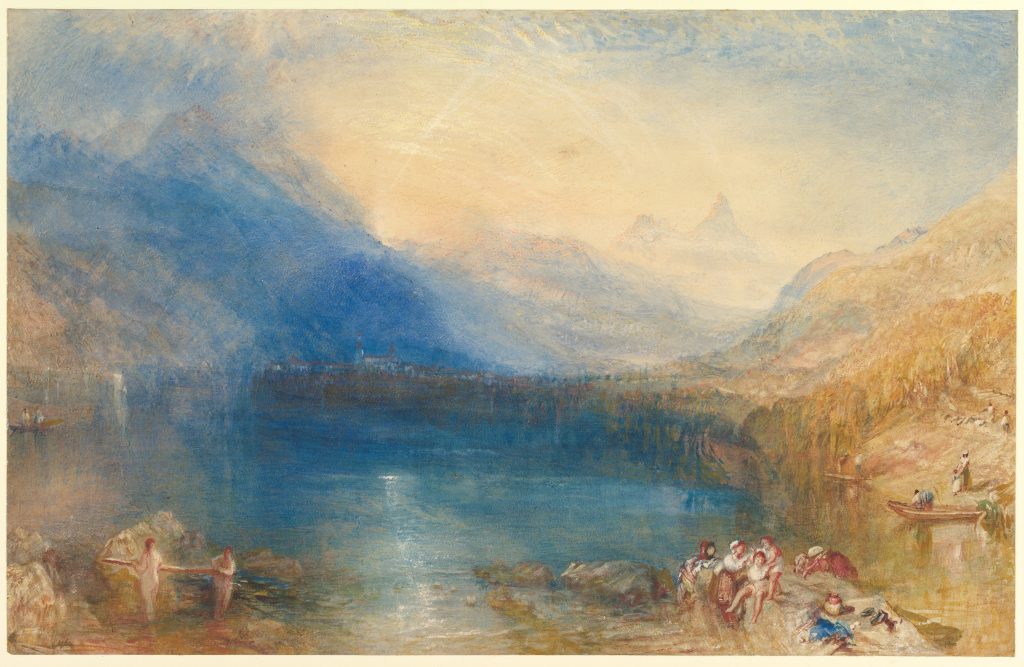
J. M. W. Turner, The Lake of Zug, 1843, The Metropolitan Museum, New York, NY, USA.
Of course, the real-life experience of being in nature can never be replicated – the sounds, the smells, the whole beautiful sensory experience of it. But you can remind yourself, with art, that we are nature-seeking creatures. You can regulate your nervous system, slow your heart rate, and just ‘be’, even if only for a moment, with great art. And if you want great art, well here it is! Gustav Klimt (1862-1918) loved Lake Attersee in Austria, and his obsession is displayed in the image below where the water takes up the totality of the painting.
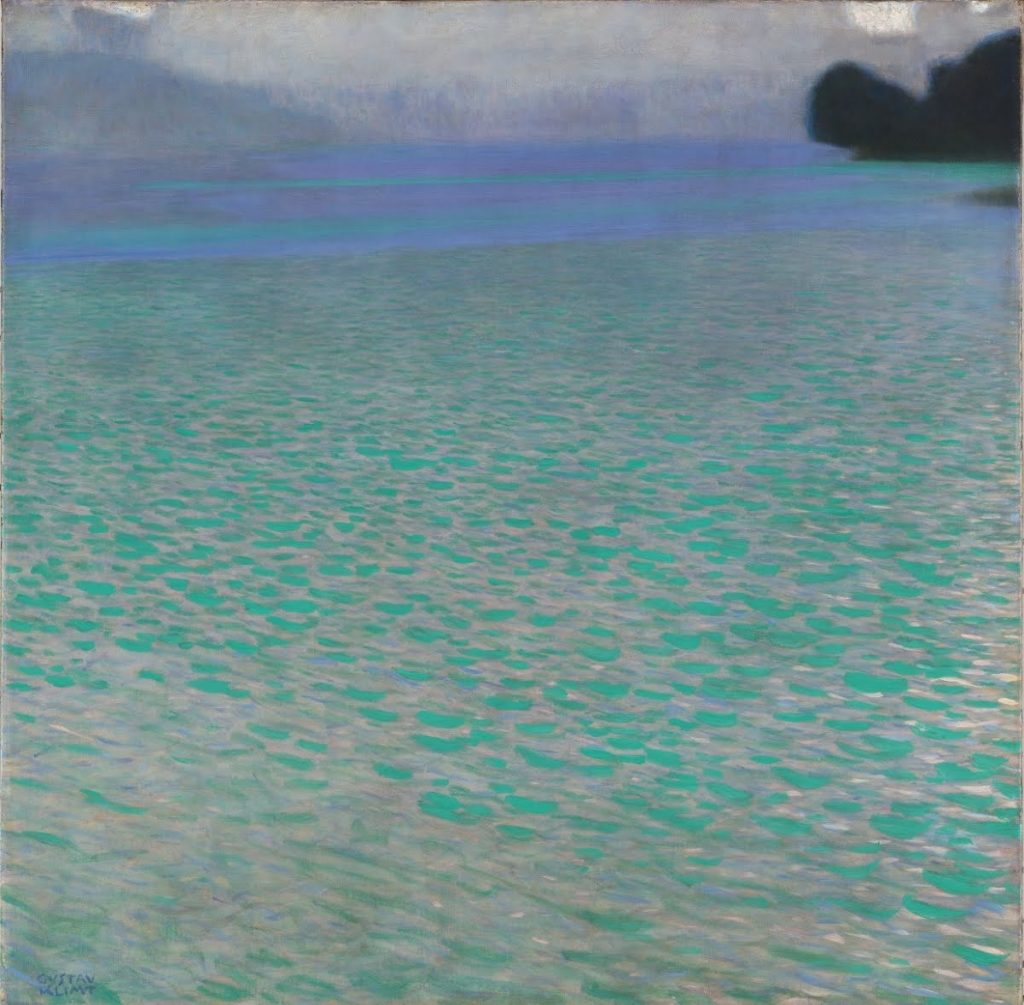
Gustav Klimt, On Lake Attersee, 1900, Leopold Museum, Vienna, Austria.
We aren’t covering rivers or seas here. This is lake country, baby! A lake is a body of freshwater, entirely surrounded by land. Every continent and every ecosystem has lakes. People across the globe rely on them for drinking water, food, sailing, swimming, and relaxation. You might call it a lagoon, a creek, a loch, or a reservoir, but whatever you call it, we love them. The simply gorgeous image below is by Finnish painter Akseli Gallen-Kallela (1865-1931) best known for his illustrations of the Kalevala, the Finnish national epic.
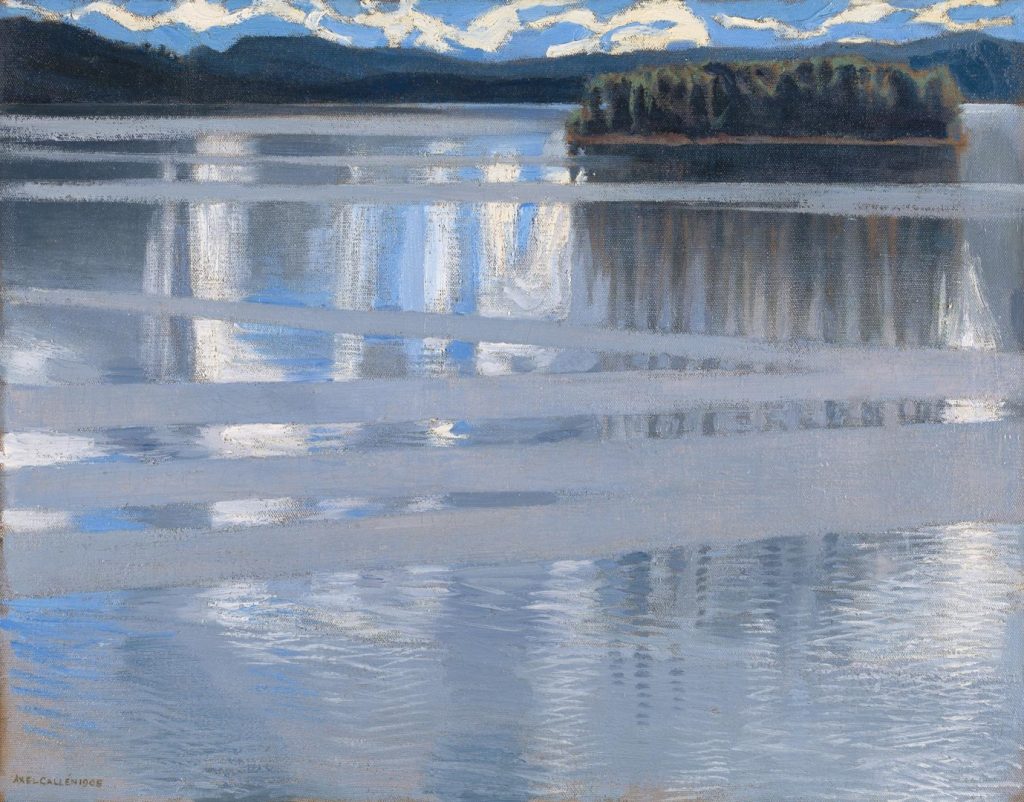
Akseli Gallen-Kallela, Lake Keitele, 1905, The National Gallery, London, UK.
Lakes can be found in paintings from all eras and all cultures. From the classical landscapes of 17th-century Europe to the 19th-century experiments with painting en plein air. From the works of ancient China, where landscape painting embodied the longing of cultivated society to commune with nature, to the salt lake paintings of Australian Aboriginal art. The evocative image below shows a lacrosse game on a frozen lake. Lacrosse was originally a tribal game, invented by Native Americans.
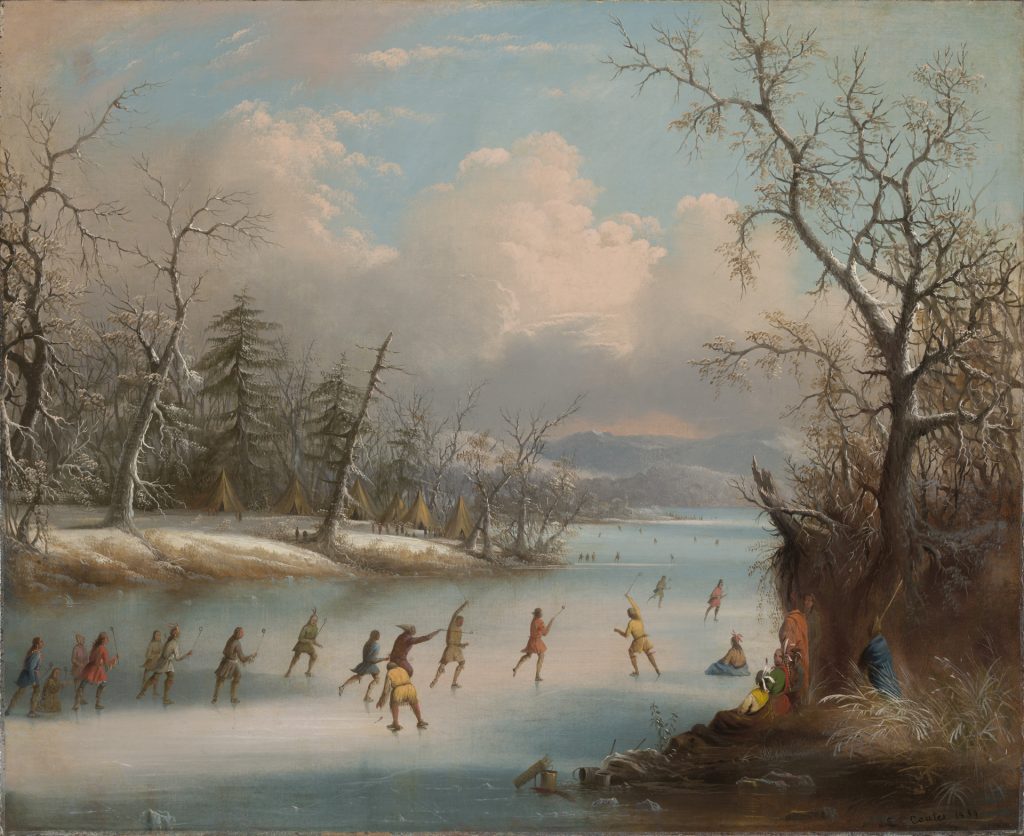
Edmund C. Coates, Indians Playing Lacrosse on the Ice, 1859, Yale University Art Gallery, New Haven, CT, USA.
Color is a key element in a lake painting, it is at the heart of every landscape painting, and sets the tone for how we feel when we look at it. Lake paintings often involve a wide view, with elements such as sky, trees, mountains, and water arranged into a coherent composition. The weather plays a part too, of course. These images can be entirely imaginary, or they can recreate a moment in time from an actual view point. You can tell the image below is by Salvador Dalí (1904-1989), as included in the landscape is a melting telephone!
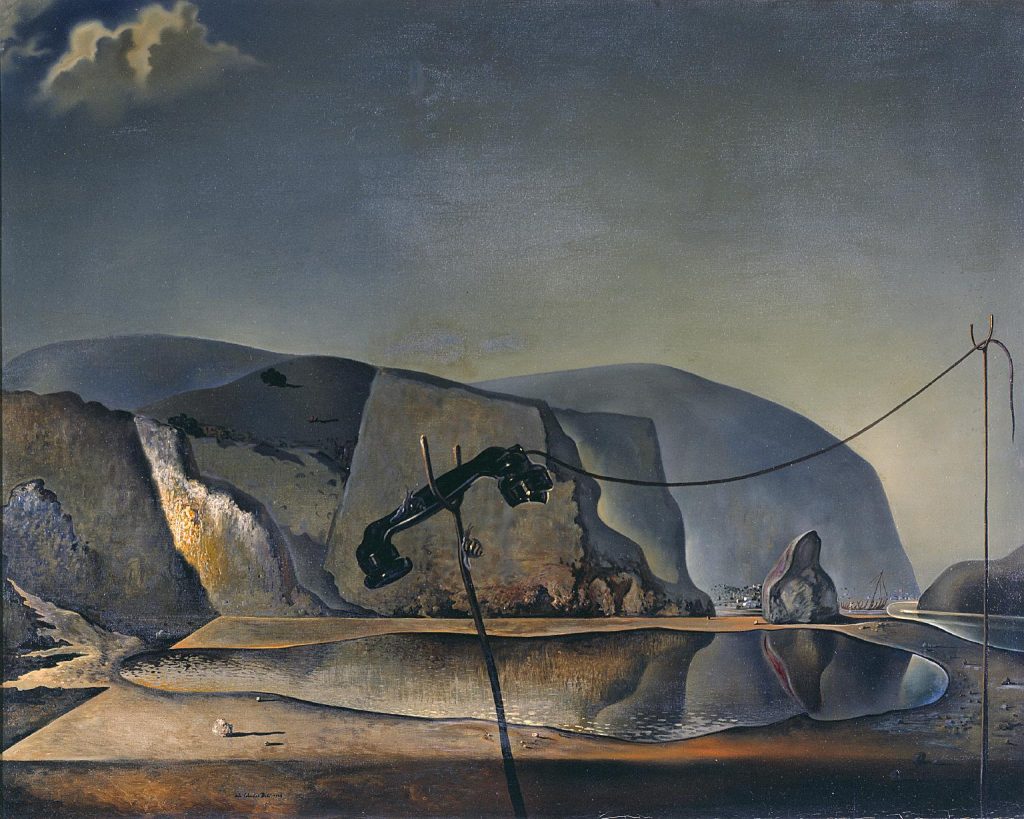
Salvador Dali, Mountain Lake, 1938, Tate, London, UK.
Many people describe a great lake painting as breathtaking. But in fact, isn’t it the opposite? Not taking a breath, but giving one? Stand at a lake, and take a deep breath – ah, yes, that feels much better. Lakes stand still, they don’t crash around the globe like the sea, and they don’t hurry off on their journeys like rivers. They just sit and wait. They fill a bit, they empty a bit. The rugged scenery of Wales has inspired artists for centuries, and Richard Wilson (1714–1782), seen below, is recognized as a pioneer of landscape painting. Considered the father of landscape painting, he influenced both Turner and John Constable.
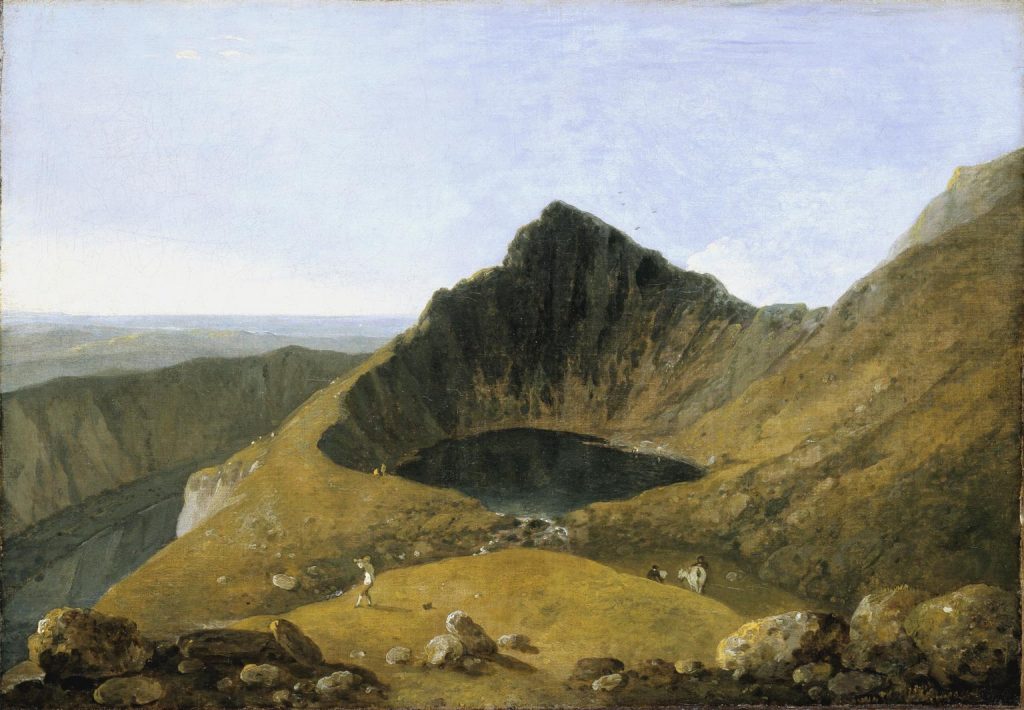
Richard Wilson, Llyn-y-Cau, Cader Idris, c. 1774, Tate, London, UK.
Limnologists study lakes, but if we cheekily sift their vast knowledge of lake history into one sentence, it might be something like this: thousands of years of ancient glaciers moving across the land created basins and holes which filled up with water, and voila – there’s your lake! What is your favorite lake painting? I love the utter tranquility of the image below by John Frederick Kensett (1816–1872), of the Hudson River School. Tell us about your favorites in the comments section.
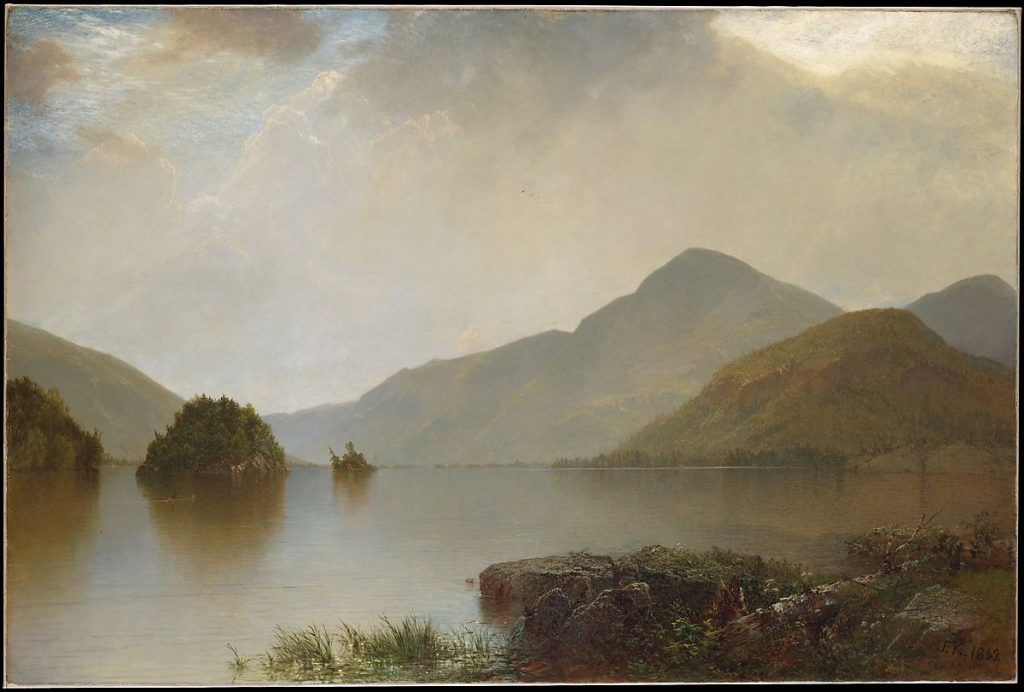
John Frederick Kensett, Lake George, 1869, The Metropolitan Museum of Art, New York, NY, USA
DailyArt Magazine needs your support. Every contribution, however big or small, is very valuable for our future. Thanks to it, we will be able to sustain and grow the Magazine. Thank you for your help!